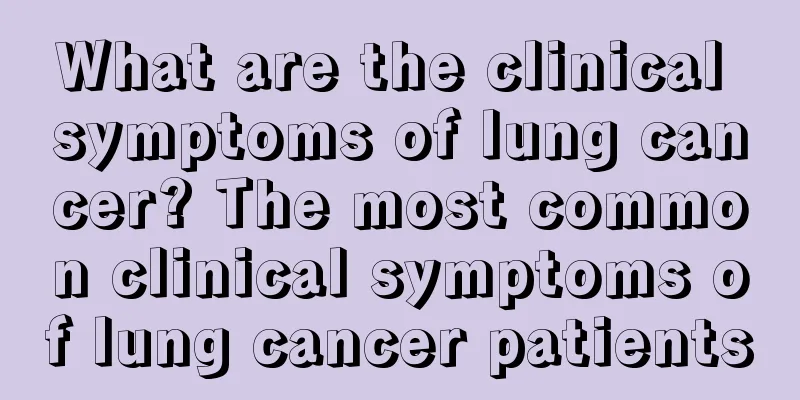What are the symptoms of Pseudomonas aeruginosa infection

|
Pseudomonas aeruginosa is a common bacterium in nature. It has low pathogenicity but strong drug resistance. If the wound is not thoroughly disinfected, it will be infected with Pseudomonas aeruginosa, causing suppuration and the production of green pus. Pseudomonas aeruginosa not only exists on human skin, but is also widely distributed in the human intestinal respiratory tract. Therefore, Pseudomonas aeruginosa infection manifests itself in many symptoms. 1. Sepsis Pseudomonas aeruginosa sepsis is often secondary to large-area burns, leukemia, lymphoma, malignant tumors, tracheotomy, intravenous catheters, heart valve replacement and various serious chronic diseases. Sepsis caused by this bacterium accounts for about 7% to 18% of Gram-negative bacillus sepsis, ranking third or fourth, and the mortality rate ranks first. Its clinical course is similar to other Gram-negative bacillus sepsis. Except that premature infants and young children may not have fever, patients may have remittent or retained fever, often accompanied by shock, adult respiratory distress syndrome (ARDS) or disseminated intravascular coagulation (DIC), etc. Characteristic deep gangrenous pustules may appear on the skin, surrounded by erythema. 48 to 72 hours after the appearance of the rash, the center is gray-black gangrene or ulcer, and there are bacterial thrombi in the small blood vessels. Bacteria can be easily found by Gram staining or culture of the exudate smear. The rash can occur anywhere on the body, but it is more common in the perineum, buttocks or axilla, and occasionally in the oral mucosa. Acromigratory abscesses may occur in the late stage of the disease. 2. Respiratory tract infection Primary Pseudomonas aeruginosa pneumonia is rare and often occurs secondary to impaired host immune function, especially on the basis of existing chronic lung diseases, such as chronic bronchitis, bronchiectasis, tracheotomy, and the use of artificial respirators. X-ray manifestations are scattered bronchopneumonia on both sides with nodular exudative shadows, and empyema rarely occurs. Patients secondary to sepsis are in critical condition, and lesions caused by necrosis of small muscular arteries or veins can be seen in the lungs. The type is similar to erythema gangrenosum, and the mortality rate is extremely high. Chronic Pseudomonas aeruginosa lung infection often occurs in patients with cystic fibrosis, often accompanied by chronic cough, sputum and progressive lung function impairment. 3. Endocarditis It often occurs on the basis of existing heart disease, after heart surgery, and valve replacement. Bacteria are often inoculated on wound sutures or patches. It can also occur on normal heart valves in patients with burns or drug addiction. The lesions can affect all heart valves, but the tricuspid valve is more common. If the vegetation affects the left heart valve, the prognosis is more serious. Compared with endocarditis caused by viridans streptococci, the drug cure rate of this disease is low. Even with sensitive antibiotics, the cure rate is still less than 30%. Therefore, surgery should be performed as soon as possible to remove the vegetation and replace the diseased valve. 4. Urinary tract infection Pseudomonas is a common bacteria in hospital-acquired urinary tract cross-infection, ranking second in the number of bacteria isolated from the urinary tract in hospital-acquired infections. Indwelling urinary catheter is a predisposing factor for infection in paraplegic patients. Other patients with neurogenic bladder, urinary tract obstruction, and chronic urinary tract infection who receive long-term antibiotic treatment are also susceptible to Pseudomonas infection. The primary cause of 40% of Pseudomonas aeruginosa sepsis is urinary tract infection. 5. Central nervous system infection It is mainly caused by Pseudomonas aeruginosa, manifested as meningitis or brain abscess, often secondary to craniocerebral trauma, head and neck tumor surgery, lumbar puncture or ventricular drainage surgery, and can also spread from ear, mastoid, and sinus infections. Neutropenia and severe burns are risk factors for Pseudomonas aeruginosa sepsis to migrate to the brain. The clinical manifestations are the same as other bacterial central infections, but the prognosis is poor, with a mortality rate of over 60%. 6. Bone and joint infections Mainly due to the hematogenous migration of sepsis or infection lesions from adjacent tissues, complicated urinary tract infections in the elderly and urogenital surgery or instrument operations can cause multiple vertebral osteomyelitis. In recent years, it has been reported that people who inject heroin often develop cervical osteomyelitis. The clinical course is no special, with less pain and a poor prognosis. 7. Eye infection Pseudomonas aeruginosa is one of the common pathogens of corneal ulcers or keratitis, which often occurs secondary to eye trauma or corneal abrasion during threshing of rice in rural areas. Pseudomonas aeruginosa contamination of contact lenses or lens fluid is another important way for this bacteria to infect the eyes. The infection develops rapidly and can spread to the entire eye within 48 hours. It can quickly cause corneal dissolution and should be treated urgently, otherwise it can easily cause blindness. 8. Ear, mastoid and sinus infections After swimming, the pH of the external auditory canal becomes alkaline due to the entry of water, which is conducive to the growth of Pseudomonas aeruginosa and causes external otitis. People with diabetes and vascular disease may occasionally develop chronic, painless, malignant external otitis caused by Pseudomonas aeruginosa. If not treated in time, the consequences are poor. Otitis media and mastoiditis caused by this bacteria are often secondary to malignant external otitis or acute otitis media. When there is diabetes or other diseases, Pseudomonas aeruginosa can pass through the vascular sheath and cause intracranial infection. 9. Skin and soft tissue infection Patients with sepsis may develop secondary skin lesions such as erythematous gangrene rash, subcutaneous nodules, deep abscesses, cellulitis, etc. Pseudomonas aeruginosa can often be cultured on burn wounds, bedsores, traumatic wounds and varicose ulcers. 10. Digestive tract infection Pseudomonas aeruginosa can cause lesions in any part of the digestive tract, and is common in infants and young children as well as immunocompromised individuals with granulocytopenia caused by tumor chemotherapy. It can cause diarrhea in infants and young children and appendicitis or rectal abscess in adults. Pseudomonas aeruginosa infection in the digestive tract is also one of the important invasion portals of sepsis. |
<<: What are the methods to close the bone line and increase height?
>>: What are the treatments for cerebral infarction?
Recommend
Where is the liver in the body?
The liver is a very important organ in the human ...
How to recognize early gastric cancer
Early gastric cancer often has no obvious symptom...
How long after a meal can I take a nap?
Most working people always feel sleepy after lunc...
What are the causes of prostate cancer in the elderly
Prostate cancer is a malignant tumor that poses a...
What does biting a straw represent in psychology
Compared with other subjects, psychology is a mor...
What to do with work anxiety
Work anxiety is a condition that many office work...
How to prevent the occurrence of lung cancer? Three key points to prevent lung cancer
Most people should know about lung cancer. At the...
How to distinguish male and female angelfish
The name angelfish is really special. In fact, it...
How to deal with facial allergies and redness?
For those who are more prone to skin allergies, t...
The principle of mustard and egg white in treating rheumatism
Rheumatism is a very common disease in people'...
The principle of hand warmers, types of hand warmers and their advantages
Hand warmers are a kind of heating product. In da...
Chin allergy causes rash
Allergies are very common and rashes will appear ...
Which one is better for reducing internal heat, white sugar or rock sugar?
In daily life, we often encounter three types of ...
Chinese medicine treats 2 different types of esophageal cancer
There are many different treatments for esophagea...
How to treat tooth abscess?
Alveolar abscess is a common disease in dentistry...









